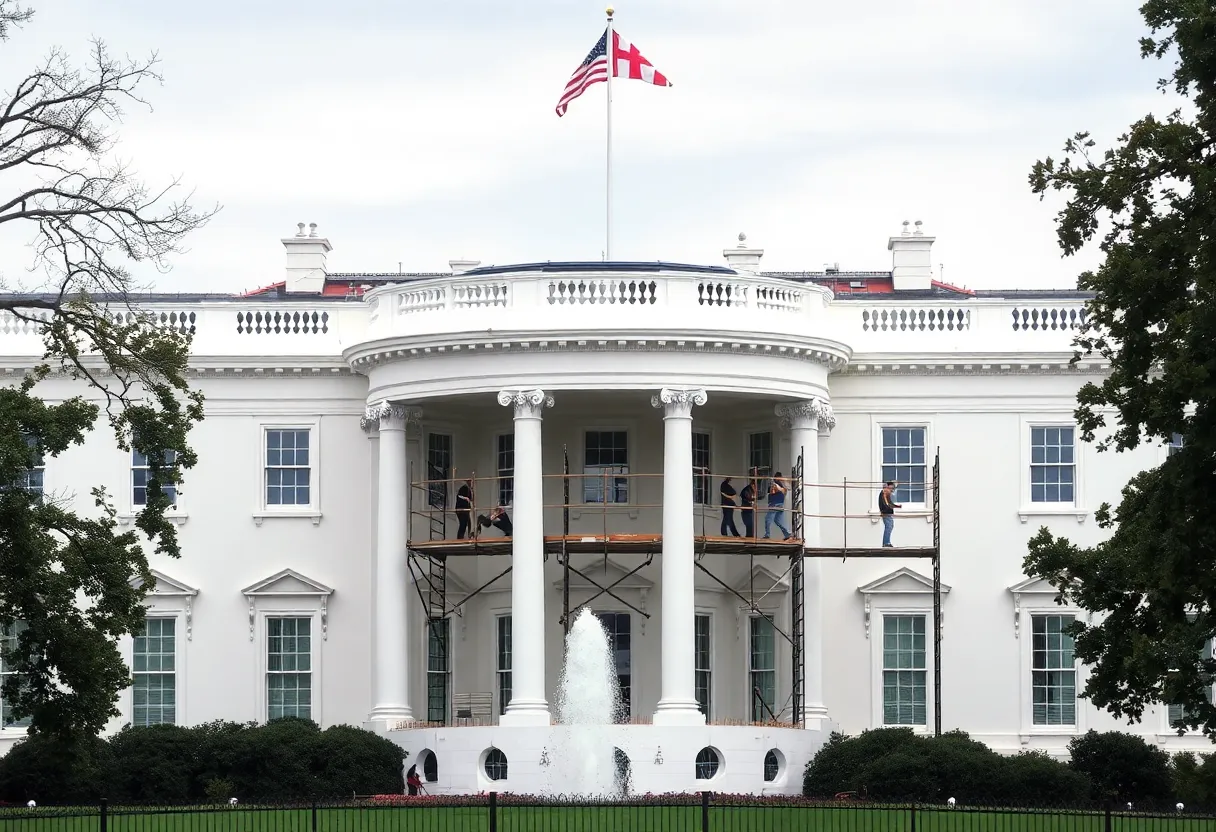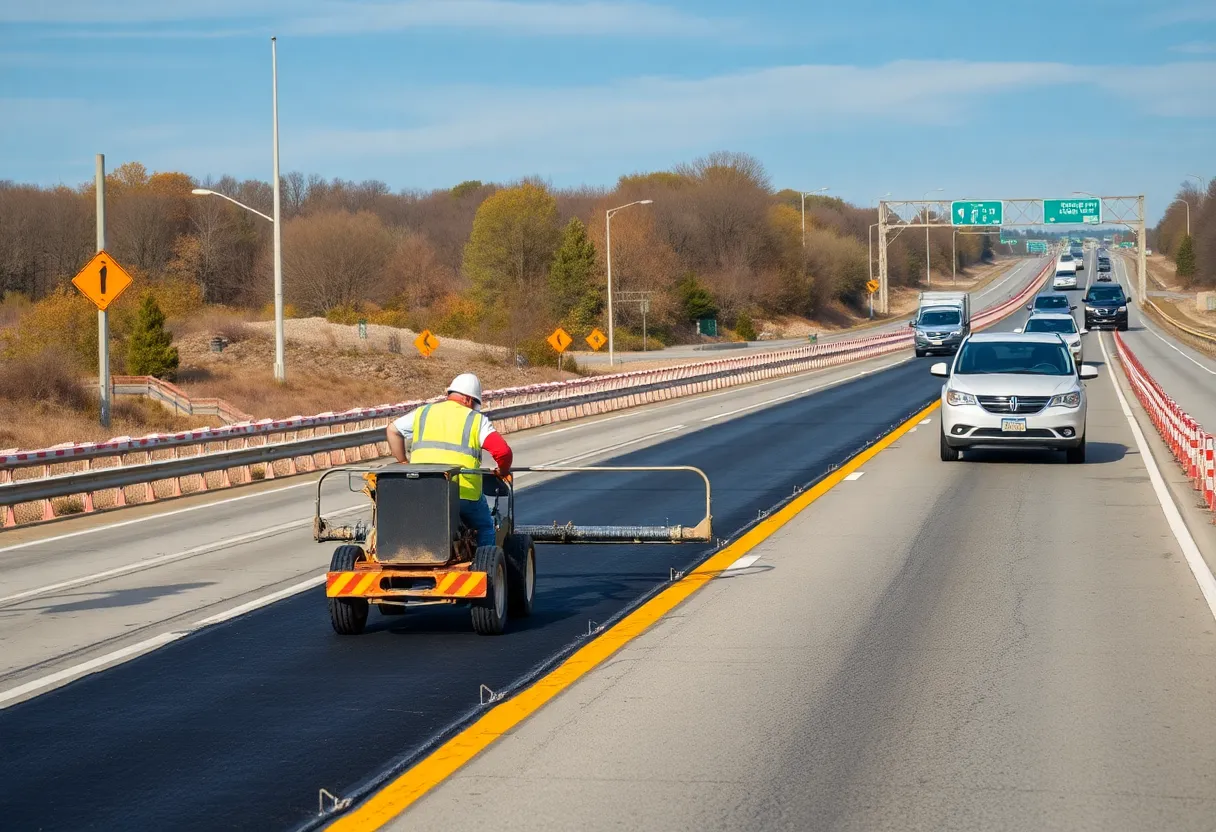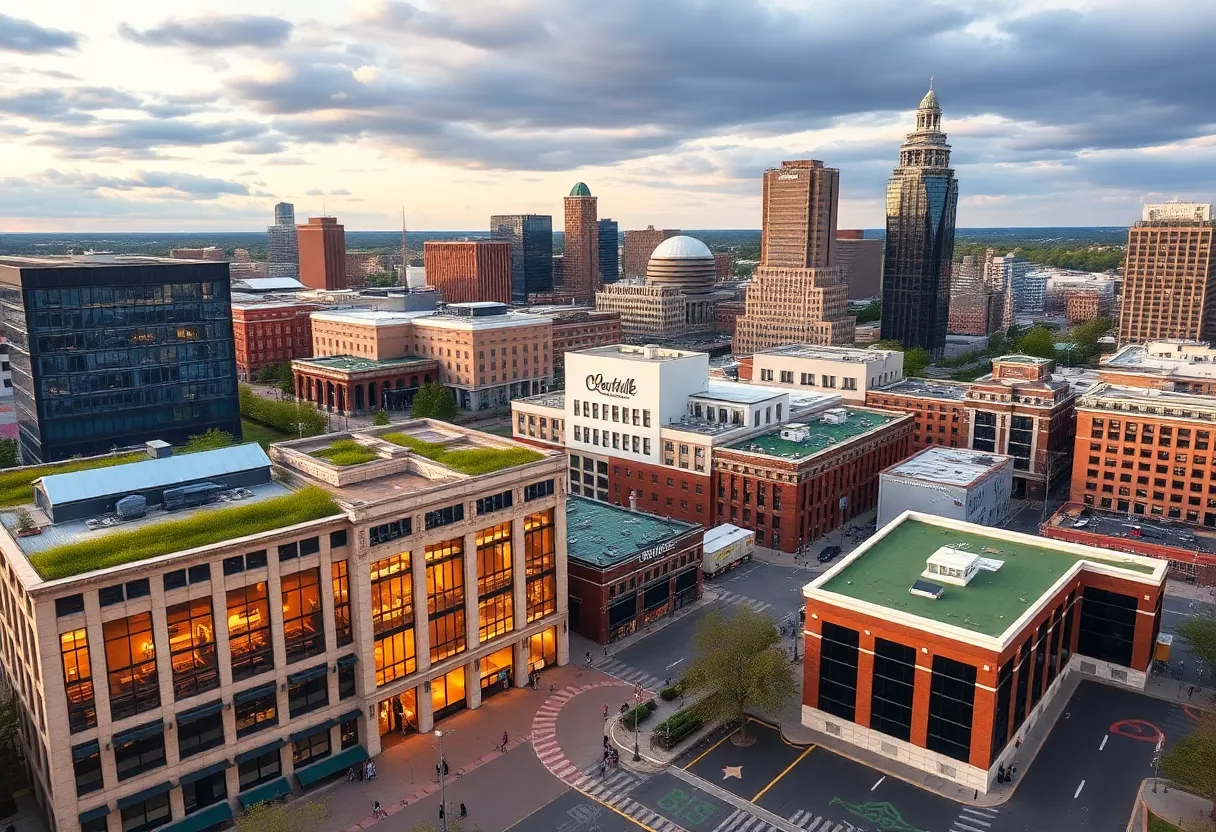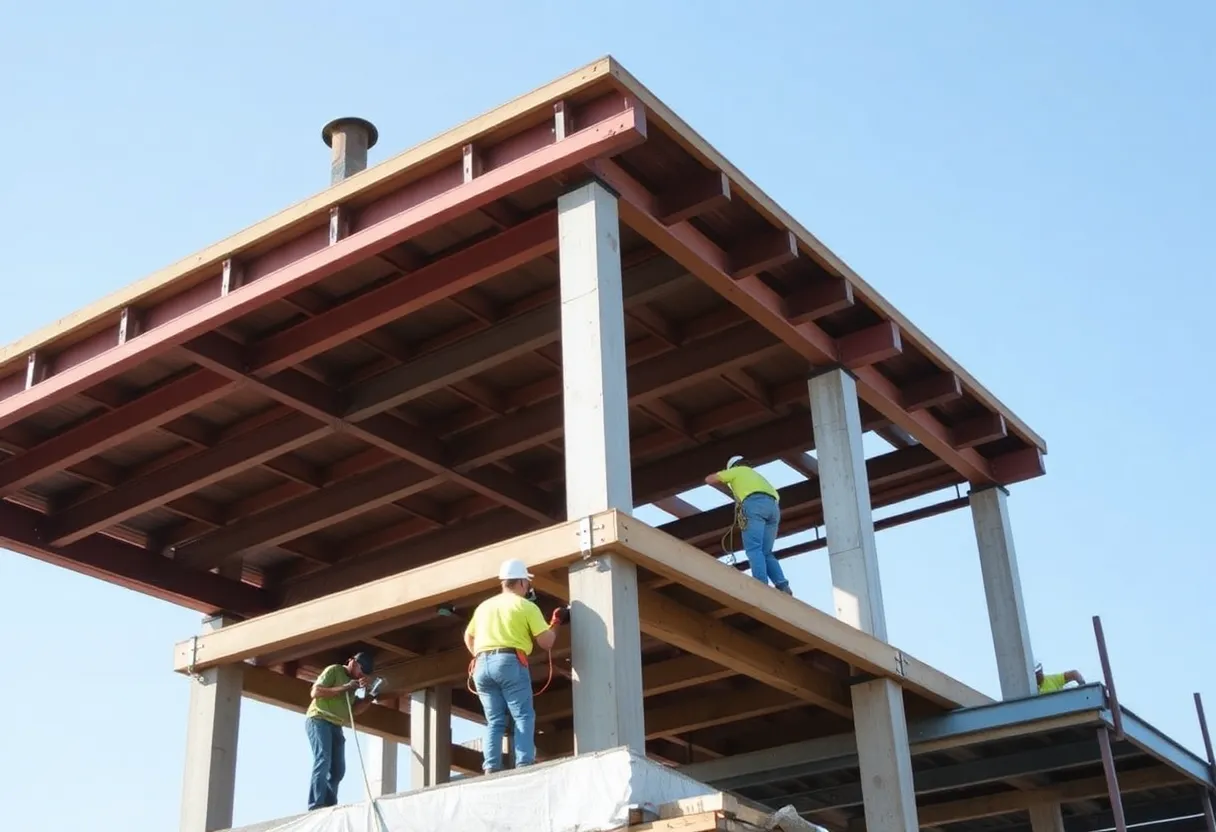News Summary
In Washington, D.C., the renovation of the White House ballroom continues amid the ongoing government shutdown. The $1.5 million project is focused on restoring historic spaces for state dinners and key events, with dedicated funding to prevent delays. Workers from local unions remain on site, ensuring progress despite facing minor setbacks due to design alterations. The initiative emphasizes the commitment to maintaining essential infrastructure and is projected for completion by early 2026.
Washington, D.C. – White House Ballroom Construction Proceeds Amid Government Shutdown
In Washington, D.C., officials confirm that construction on the White House ballroom is continuing despite the ongoing government shutdown. The project, valued at $1.5 million, focuses on restoring historic spaces used for key events, ensuring essential maintenance work moves forward uninterrupted.
Key aspects of the initiative include prioritizing core restoration efforts, which have secured dedicated funding to avoid delays from broader fiscal restrictions. This approach highlights exemptions for critical infrastructure during shutdowns, allowing workers from local unions to remain on site. The ballroom, primarily utilized for state dinners, has experienced some setbacks due to design changes, but these have not halted progress entirely.
Officials emphasize that the project’s continuity reflects a commitment to maintaining the venue’s full operational status. Public attention to the effort is growing, driven by the site’s historical importance and its role in presidential functions. Completion is targeted for early 2026, with the work aimed at enhancing the space for future events amid persistent budget challenges.
Project Background and Details
The White House ballroom renovation involves updating historic areas to preserve their legacy while adapting them for modern use. This initiative underscores the importance of sustained upkeep for national landmarks, even in times of fiscal uncertainty. The $1.5 million investment covers essential repairs and improvements, ensuring the venue remains suitable for high-profile gatherings.
Despite the government shutdown, core maintenance funding has been allocated to keep the project on track. This funding mechanism demonstrates how certain essential activities are protected from widespread pauses. Workers associated with local unions have continued their roles without interruption, contributing to the effort’s steady advancement.
The ballroom has faced minor delays stemming from design alterations, which were necessary to address specific structural needs. These adjustments have been integrated into the timeline, with the overall goal of completing the work by early 2026. This timeline aligns with plans to bolster the venue’s functionality, supporting its use in presidential events and ceremonies.
Broader context reveals that such projects often receive exemptions during shutdowns due to their classification as critical infrastructure. This status allows for uninterrupted operations, reflecting a strategic focus on preserving national heritage. The ongoing work also draws increased public and media interest, as the White House’s historical significance continues to captivate audiences.
In the face of budget tensions, this renovation exemplifies a balanced approach to legacy preservation. By prioritizing essential functions, officials ensure that key aspects of governmental operations remain intact. The project’s progress serves as a reminder of the enduring value placed on maintaining historical sites, even under financial constraints.
Further details include the ballroom’s role in hosting state dinners and other formal events, which require reliable infrastructure. The $1.5 million cost encompasses various restoration activities, from structural enhancements to aesthetic improvements. Officials have noted that these efforts will ultimately strengthen the venue’s capacity for future use, contributing to its long-term sustainability.
The initiative’s continuation amid the shutdown highlights broader exemptions for projects deemed vital to national interests. This approach helps mitigate potential disruptions, ensuring that important work proceeds without significant hindrance. As public interest grows, the project stands as a testament to the commitment to uphold historical and functional standards.
Looking ahead, the early 2026 completion date positions the ballroom for enhanced presidential functions. This renovation not only addresses immediate needs but also supports ongoing efforts to maintain the White House as a symbol of national heritage. Through careful planning and funding strategies, the project navigates budget tensions effectively, keeping essential progress on course.
In summary, the White House ballroom construction in Washington, D.C., represents a focused effort to restore and preserve a key historical space. With dedicated funding and exemptions in place, the work continues to advance, overcoming challenges posed by the government shutdown. This initiative underscores the priority placed on maintaining critical infrastructure for the benefit of future generations.
The renovation process involves detailed assessments of the ballroom’s structure, ensuring that all updates align with historical preservation guidelines. These guidelines help maintain the integrity of the site, balancing modern requirements with traditional elements. For instance, materials and designs are selected to complement the existing architecture, preserving the venue’s original character.
Workers on site follow established protocols to minimize disruptions, coordinating their efforts to align with the project’s timeline. This coordination is crucial for meeting the early 2026 deadline, which allows time for thorough testing and final adjustments. The $1.5 million budget is allocated across various phases, including initial planning, execution, and post-construction reviews.
Overall, the project’s resilience amid fiscal freezes illustrates the strategic importance of exemptions for essential maintenance. By prioritizing these efforts, officials ensure that the White House remains a functional and symbolic cornerstone of national identity. Public awareness of such projects continues to grow, fostering appreciation for the ongoing work required to sustain historical landmarks.
This comprehensive approach to renovation not only addresses current needs but also sets a precedent for future projects. It demonstrates how targeted funding and planning can sustain progress even in challenging circumstances, reinforcing the value of investing in national heritage.
FAQ Section
- Q1: What is the status of the White House ballroom construction during the government shutdown?
- Q2: How much does the White House ballroom renovation cost?
- Q3: What ensures the continuity of the White House ballroom project amid fiscal freezes?
- Q4: What caused delays in the White House ballroom construction?
- Q5: Are workers affected by the shutdown in the White House ballroom project?
- Q6: What is the completion timeline for the White House ballroom renovation?
- Q7: Why is the White House ballroom project considered an exception during shutdowns?
A1: Construction on the White House ballroom is continuing despite the government shutdown, according to officials, prioritizing key restoration projects.
A2: The initiative, costing $1.5 million, renovates historic spaces for events.
A3: Despite fiscal freezes, core maintenance funding ensures continuity.
A4: The ballroom, used for state dinners, underwent delays due to design alterations.
A5: Workers from local unions continue, unaffected by broader stalls.
A6: Completion is slated for early 2026, enhancing presidential functions.
A7: This exception highlights critical infrastructure exemptions in shutdowns.
Key Features Chart
| Feature | Details |
|---|---|
| Project Cost | $1.5 million |
| Status During Shutdown | Continuing with exemptions |
| Completion Date |





